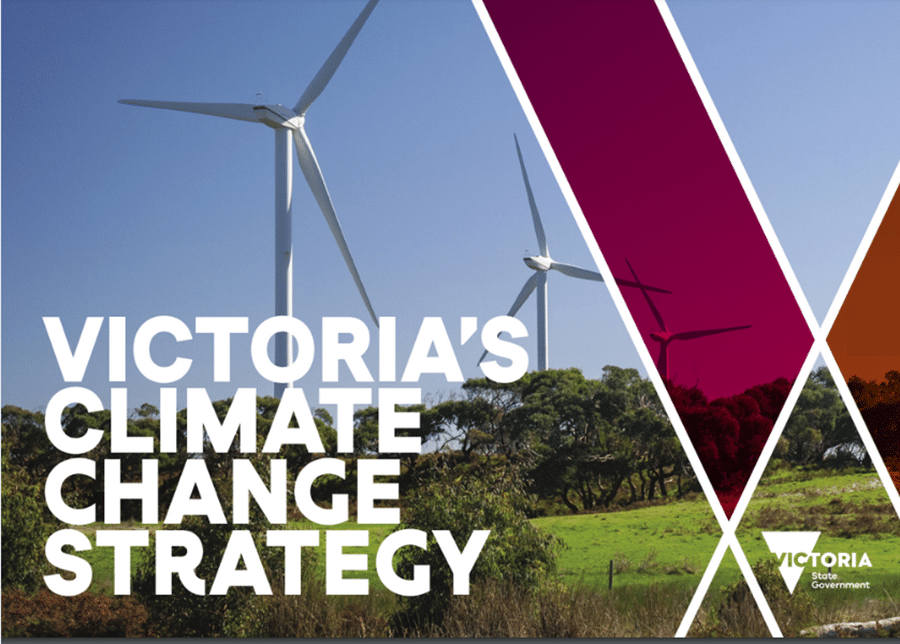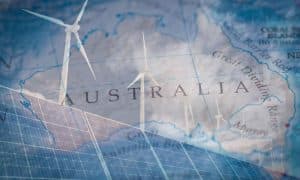Climate change is a global challenge that affects every corner of the Earth, requiring local and international efforts to mitigate its impacts. In Australia, Victoria has taken significant steps to address this issue through its comprehensive climate change strategy. In this article, we will delve into the details of Victoria’s Climate Change Strategy and explore its key components, goals, and initiatives to tackle climate change and create a more sustainable future.
Are you looking to save money on your electricity bills and reduce your carbon footprint? Solar energy is the perfect solution! Energy Matters can help you get up to 3 FREE quotes from pre-qualified and vetted solar firms in your area.
Energy Matters has been a leader in the renewable energy industry since 2005 and has helped over 40,000 Australian households in their journey to energy independence. With Energy Matters, you can be sure you’re getting the best possible deal on solar energy. We only work with reputable solar firms with a proven track record of delivering high-quality solar systems.
Understanding climate change
Climate change refers to long-term alterations in Earth’s temperature, precipitation, and other climatic variables. It is primarily driven by human activities, such as burning fossil fuels, deforestation, and industrial processes, which release greenhouse gases like carbon dioxide (CO2) into the atmosphere. These gases trap heat, leading to global warming and environmental changes.
The importance of Regional Climate Change Strategies
While international and national efforts to combat climate change are crucial, regional strategies are essential to address specific local challenges. Victoria, a state in southeastern Australia, faces various climate-related issues, including
Extreme weather events: Victoria is susceptible to heatwaves, bushfires, and droughts.
Sea level rise: As a coastal region, Victoria is vulnerable to rising sea levels and associated flooding.
Agriculture and water supply: Changes in temperature and precipitation patterns can impact agriculture and water resources.
Biodiversity: Climate change threatens the unique ecosystems and biodiversity in the state.
Public health: Heatwaves and changing disease patterns affect public health.
Victoria’s Climate Change Strategy is designed to address these challenges and develop a sustainable and resilient future for the state.
Victoria's Climate Change Strategy
Victoria’s Climate Change Strategy is a plan to reduce greenhouse gas emissions and build resilience to the impacts of climate change. The strategy includes actions to transition to a clean energy future, invest in innovative technologies, and protect the natural environment. The government has set ambitious targets to reduce emissions by 28-33% by 2025 and 45-50% by 2030.
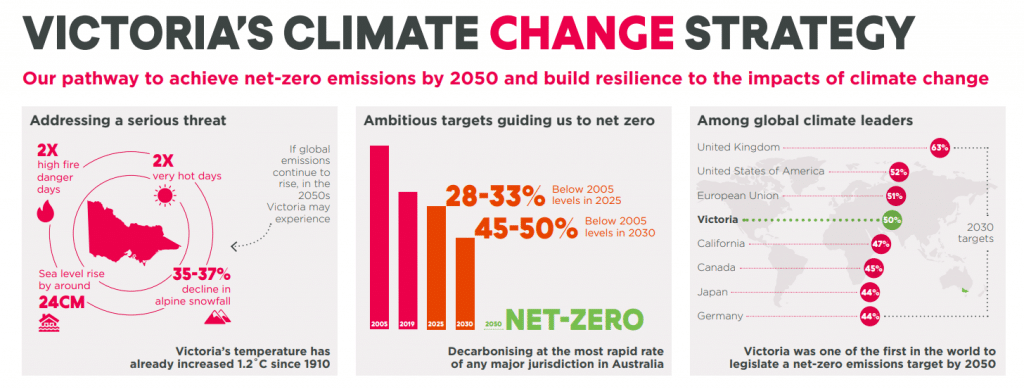
The strategy focuses on the following key areas:
Clean energy
The government will invest in renewable energy sources such as solar and wind power and support the development of new technologies such as carbon capture and solar battery storage.
Energy efficiency
The government will work to improve energy efficiency in homes, businesses, and industry.
Transport
The government will invest in public transport and electric vehicles, making walking and cycling easier.
Land use and forestry
The government will protect and restore forests and plant more trees.
Adaptation
The government will help communities adapt to the impacts of climate change, such as sea level rise and extreme weather events.
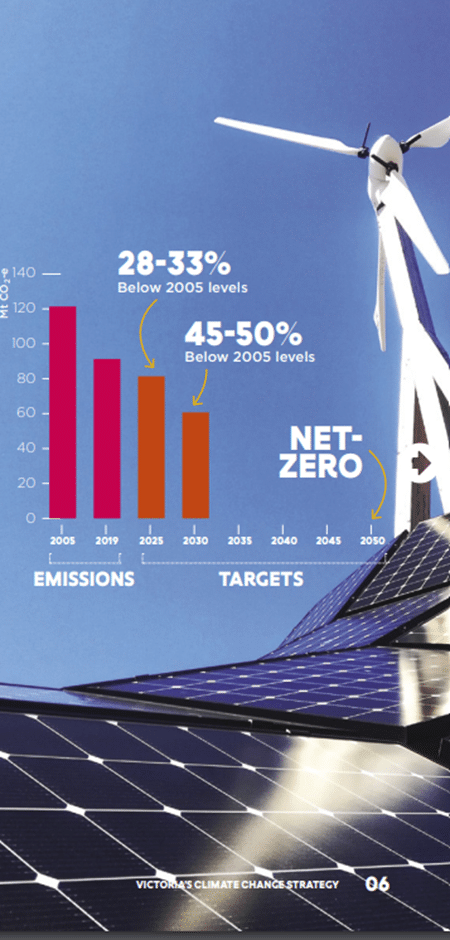
Emissions reduction targets
Victoria’s Climate Change Strategy sets ambitious emissions reduction targets, aiming to achieve net-zero emissions by 2050. This commitment aligns with the Paris Agreement’s goal to limit global warming to below 2°C above pre-industrial levels. It reflects Victoria’s dedication to mitigating climate change.
Renewable energy transition
One of the central pillars of the strategy is the transition to renewable energy sources. Victoria aims to significantly increase the share of renewable energy in its energy mix, reducing its reliance on fossil fuels. This transition includes expanding wind and solar power, investing in energy storage, and supporting the development of clean energy technologies.
Energy efficiency and innovation
The strategy promotes energy efficiency across various sectors, such as residential, commercial, and industrial. It encourages innovation to reduce energy consumption and lower emissions, including initiatives to improve building standards, promote electric vehicles, and support green technologies.
Resilience and adaptation
Climate change impacts are already being felt in Victoria, from more frequent heatwaves to extreme weather events. The strategy includes measures to enhance the state’s resilience, such as infrastructure upgrades, better land management, and community engagement to address the challenges of a changing climate.
Community and stakeholder engagement
Victoria’s Climate Change Strategy emphasises the importance of involving communities and stakeholders in the decision-making process. It encourages collaboration and public participation to ensure that the strategy aligns with the values and priorities of Victorians.
Economic opportunities
The strategy recognises that the transition to a low-carbon economy can create economic opportunities, such as the growth of renewable energy industries, the development of sustainable agriculture, and job creation in the green sector.
Are you tired of being the last to know about renewable energy and broadband updates? Did you miss out on a state rebate or incentive? Looking to find out more about how you can save on your utility bills? Subscribe to Energy Matters’ weekly newsletter and keep updated with Australian and international news, incentives, and offers.
Benefits of Victoria's Climate Change Strategy
Victoria’s climate change strategy offers numerous benefits
Economic Opportunities: Transitioning to a low-carbon economy can stimulate job growth and new economic opportunities in clean energy and sustainable industries.
Environmental conservation: Protecting Victoria’s natural environment, including its diverse ecosystems and wildlife, is a fundamental aspect of the strategy.
Public health and well-being: Strategies for reducing emissions and adapting to climate change can positively affect public health, particularly during heatwaves and extreme weather events.
Resilience and security: Preparing for climate change impacts enhances the state’s resilience and security in the face of ongoing and future challenges.
Initiatives and actions
To achieve its objectives, the strategy outlines several key initiatives and actions:
The Victorian Renewable Energy Target (VRET) aims to source 50% of the state’s energy from renewable sources by 2030, providing incentives for clean energy projects and investments.
The Energy Upgrades program encourages energy-efficient upgrades in residential and commercial buildings, reducing emissions and energy costs—investment in public transport and active transport infrastructure to reduce carbon emissions from the transportation sector.
The Climate Change Act 2017 provides the legal framework for the strategy’s implementation, setting clear targets and requirements for reporting on progress.
Research and development programs to support innovation and technology adoption to reduce emissions and enhance resilience.
Support for climate adaptation programs that address the impacts of climate change on vulnerable communities and ecosystems.
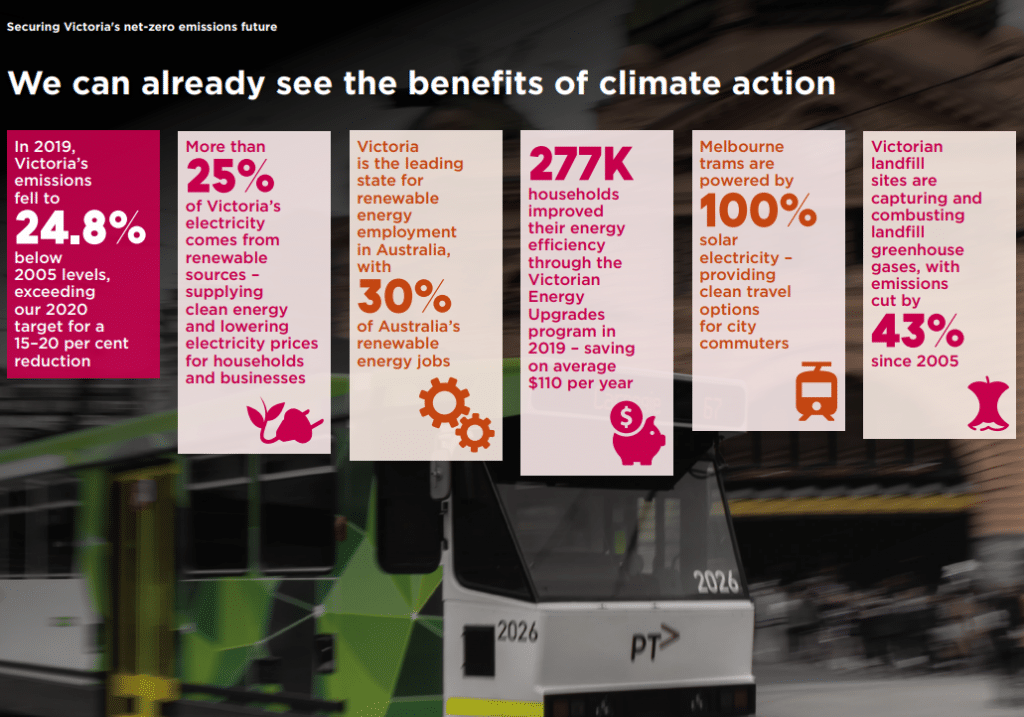
Challenges and prospects
While Victoria’s Climate Change Strategy represents a significant step towards addressing climate change, challenges remain. The state must continue implementing and monitoring its initiatives, engaging with stakeholders, and adapting to changing circumstances. The strategy’s success relies on ongoing commitment, collaboration, and public awareness.
Source&Images: Victoria State Government-Energy, Environment and Climate Action
Victoria: Making strides toward a sustainable and low-carbon future
Victoria’s Climate Change Strategy is a comprehensive and proactive approach to tackling climate change at the state level. With ambitious emissions reduction targets, a focus on renewable energy, and initiatives to enhance resilience, Victoria is making strides toward a sustainable and low-carbon future. By addressing climate change head-on, Victoria sets an example for other regions to follow, contributing to global efforts to combat this critical issue.
Still can’t afford to switch to solar power?
Are you considering getting solar panels but are currently short on funds? You can still invest wisely, and Energy Matters can help you.
Powow and Energy Matters have teamed up to provide consumers with an alternative to switching to solar power and battery storage.
The biggest obstacle to installing solar and battery storage is typically finance. With Powow’s PPA and VPP, our customers will have a $0 upfront option and financial stability in the uncertain energy market.
Get up to 3 obligation-free quotes by getting in touch with us right away. Find out what payment plan options suit your needs and budget!









